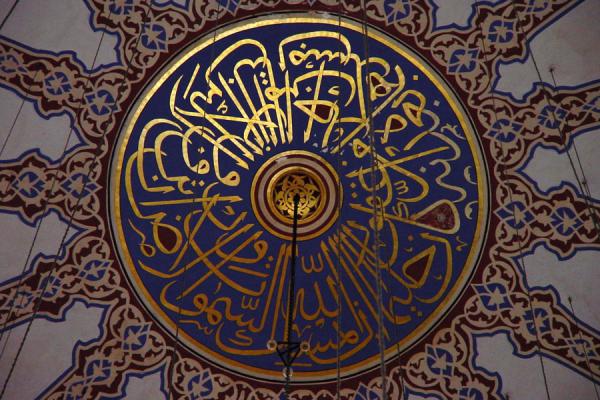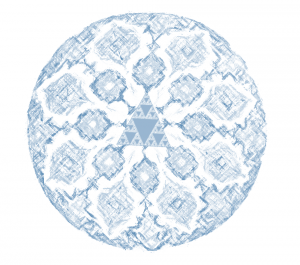Week 6: The art and architecture of mosque and other places of Muslim devotion


Photographs of the Blue Mosque (left) and the Hagia Sophia (right).

Blue Mosque Ceiling

Penrose Crystal Pattern

My Drawing
This week, in our readings of The Mosque and the Topkapi Scroll, as well as the section discussions, we discussed, among other things, the influences underlying the art and architecture found in mosques. In particular, we were interested in finding out whether the inspiration was divine or if it was influenced by more worldly affairs such as political and cultural concerns. The first image here is of the roof in the Blue Mosque in Istanbul. The next image is of the Hagia Sophia, just a few hundred feet from the Blue Mosque. Some very common features can easily be seen in both images such as the heavy use of Arabesque to decorate the roofs and walls of both structures, the large dome-shaped ceilings, and arabic texts in interesting locations. Other common Mosque features, while not visible in the pictures, included in both are the Mihrab and the Minbar.
I actually had the pleasure of visiting both and actually took the first two photographs with my phone. I noticed some interesting differences between the two buildings. The Blue Mosque stressed symmetry to a much greater degree than the Hagia Sophia and had some extra features that would be useful in prayer such as an Ablution fountain in the courtyard whereas the Hagia Sophia had an extensive series of outer layers containing mainly the tombs of past Ottoman Emperors. Since it was converted from a Church, it also included a few Christian images on some walls which were interesting to see, especially given our reading of the article on Wahhabism in the Turkish Times. Their presence lends more credence to the idea of cultural significance in artistic renderings since such images would have been removed long ago under different interpretations of Islam.
In order to capture some of the ideas behind these designs, I decided to create a drawing of my own design. My drawing is of a circle containing a symmetric design. Architects and painters of most Mosques gave a great deal of consideration to symmetry and of giving emphasis to the idea of the unity of God. The circle amplifies the idea of oneness while the geometrical designs within create a theme of multiplicity. Some aspects of this design can be seen in the third image, which is a photograph of a portion of the ceiling in the Blue Mosque. In this image, a pattern is inscribed into a circle, as is the case with my drawing. At the very center of the circle, I have drawn a Sierpinski triangle, a geometrical shape composed of infinitely smaller equilateral triangles.
The idea of infinity is another way to connect with God. In the Blue Mosque image, calligraphy is inscribed into the circle so that if one were to begin reading from any part of the circle, it would involve infinite repetition since the circle never ends. Moreover, the way in which a Sierpinski triangle is constructed involves use of the “Chaos Game”, which is relevant to Islam because the world is filled with chaos, but it is the goal of the faithful to attach themselves to God and remove themselves of the chaotic distractions around them. Chaos Theory involves the construction of a geometric shape made from infinitely smaller parts of a larger version of itself so that no matter how small an area one considers, a shape exactly proportional to the larger shape can be constructed. In Islam, it is believed that God has revealed signs of himself in his creation and this is part of the belief behind the importance of mystical experience which allows you to understand these signs. The concept of “infinitely small” resonates with this idea for me since if something is infinitely small, one would not be able to see it even if it is right in front of them as is the case with God. In the triangle case, the smallest triangles are smaller than we can observe with any technology, but they still exist and a mystic might argue that having a sufficient connection with the world around you would allow you to sense their presence. In terms of geometry, infinity is important because many patterns approach specific ratios (in the area of specific parts of the pattern, in the ratios of the colors, etc.) if extended to infinity and the concept of convergence is another Islamic concept since the goal of each individual is to merge with God, which is quite similar to converging. One particular example of this concept was observed by a Harvard graduate student in a 15th century madrasa, or Islamic religious school, in Bukhara when he noticed a Penrose crystal pattern (as demonstrated in the third image) in the tiles on the architecture. In this particular pattern, the entire pattern is repeated inside of itself and if extended to infinity, the ratio of the two shapes approaches the golden ratio. Even though Islamic art may seem very mathematical at first glance, many subtle hints are dropped as to how the fundamental aspects of the art relate to God and I sought to capture these in my drawing.